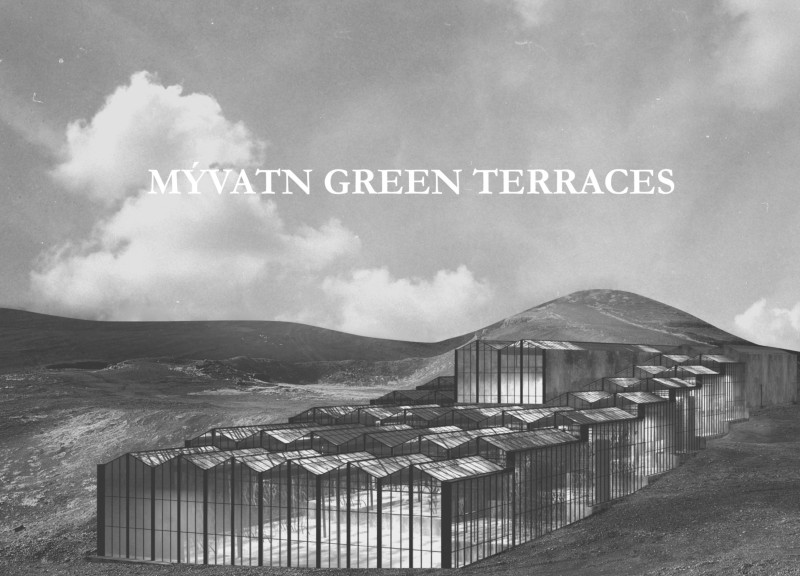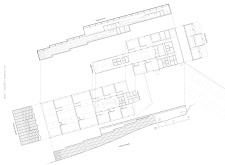5 key facts about this project
MÝVATN GREEN TERRACES is located in Iceland and seeks to connect the built environment with the surrounding landscape. The design features a terraced structure that follows the natural shape of the hillside. The main function is a restaurant housed within a greenhouse, highlighting sustainability while immersing visitors in the beauty of Iceland’s scenery.
Design Concept
The primary idea behind MÝVATN GREEN TERRACES is to reduce environmental impact while encouraging a strong connection to nature. The terraced form allows the building to blend with the hillside, maintaining visual continuity with its surroundings. By placing the restaurant inside a glasshouse, the design fosters a close relationship between the dining experience and the natural landscape, allowing guests to enjoy vibrant greenery as they eat.
Modular Approach
This project takes a modular design approach, which means it uses standard elements that can easily be expanded in the future. This flexibility is important for adapting to changing needs while remaining focused on ecological principles. The use of established greenhouse designs enhances efficiency and reliability, ensuring that functionality and aesthetics work together.
Spatial Experience
The interior of the restaurant offers a range of spaces that enhance the dining experience, providing various views of the terraced fields. The arrangement encourages guests to engage with the landscape outside. Natural light streams into the greenhouse, enriching the atmosphere and making the space feel bright and inviting.
Technical Overview
The design is supported by comprehensive architectural plans that include long sections, floor layouts, and faҫades. These details illustrate the careful choices made to balance practicality with visual appeal. Axonometric views clarify how the building fits within its site, showing the thoughtful integration with the landscape.
Light and shadow play a significant role within the glasshouse, creating an environment where the changing natural conditions enhance the experience of both the food and the views outside.






















































